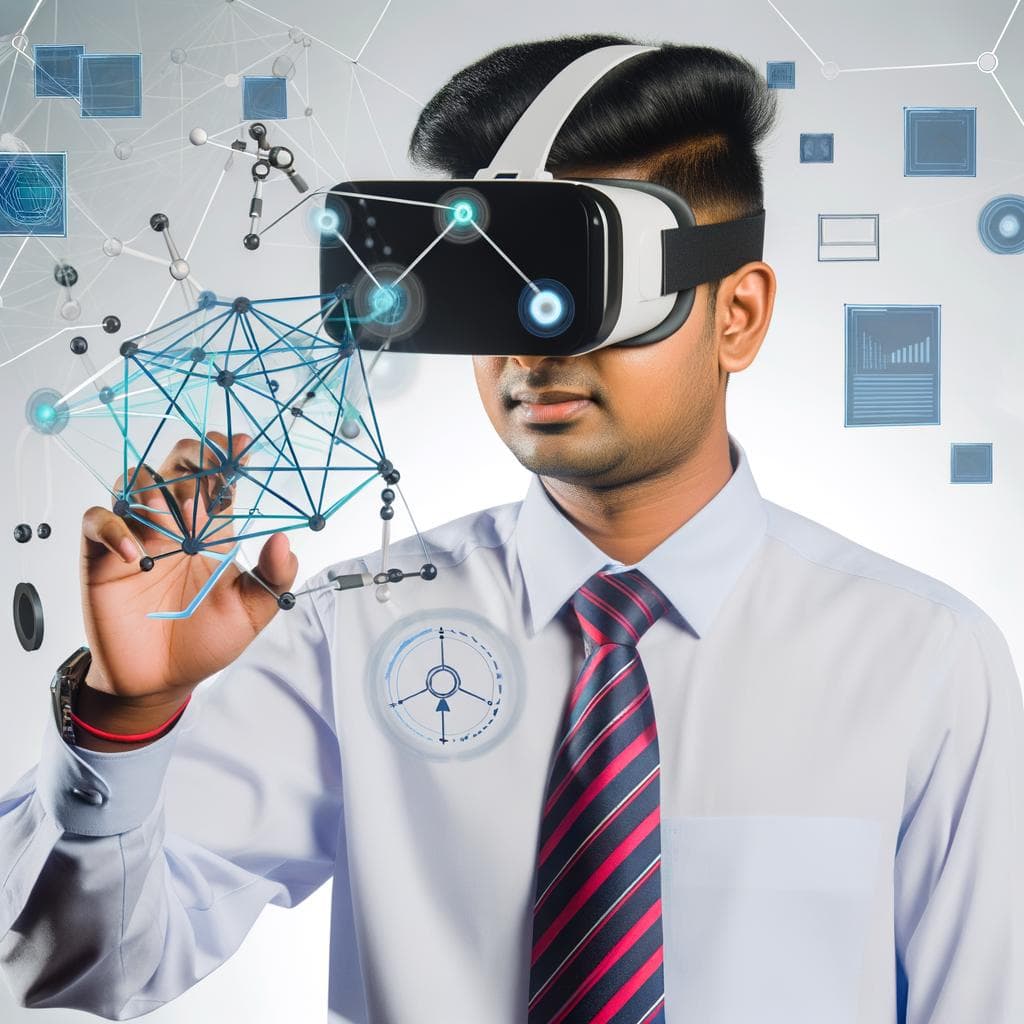Revolutionizing Employee Onboarding Experience with Virtual Reality
Discover how Virtual Reality (VR) is revolutionizing the employee onboarding experience, offering immersive, interactive, and impactful introductions to organizations.

VIG Learning Team

Introduction
First impressions carry significant weight, shaping perceptions and future interactions. This holds true for businesses as well. The way an organization ushers new employees into its fold can heavily impact their view of the company and their subsequent performance.
The onboarding process, a critical part of talent management, is often a neglected area, filled with tedious paperwork and lackluster introductions. But what if there was a way to transform this mundane process into an engaging, memorable experience? The answer lies in harnessing the power of Virtual Reality (VR).
This comprehensive guide explores how VR is revolutionizing the employee onboarding experience, making it more immersive, interactive, and impactful.
Understanding
Virtual Reality in Onboarding
Virtual Reality is a simulated experience that can either mirror the real world or create entirely new, unique environments. It replicates an environment that simulates a user's physical presence permitting user interaction.
Within the scope of employee onboarding, VR can provide a more engaging and interactive introduction to the organization and its operations. Imagine being able to conduct a virtual tour of the office, simulate real-life job scenarios, and provide interactive training sessions, all from the comfort of the new hire's home or current location.
The Evolution of Onboarding: From Traditional to VR
The traditional onboarding process, while functional, often lacks engagement for new hires.
It typically involves a series of presentations, numerous forms to fill out, and perhaps a quick tour of the office. For someone beginning a new job, it's not the most exciting start. VR, on the other hand, offers an immersive experience, allowing new hires to virtually explore the office, interact with potential colleagues, and even practice their job roles in a risk-free environment.
The difference is akin to watching a travel documentary versus actually visiting the place.
Key Benefits of VR in
Onboarding
The application of VR in onboarding offers multiple benefits, including amplified engagement, improved retention, efficient training, and enhanced employer branding.
Increased Engagement
VR provides a highly engaging and interactive experience.
It enables new hires to be active participants in the onboarding process, instead of passive recipients of information. This level of engagement can lead to higher job satisfaction, improved retention rates, and a stronger connection with the company.
Efficient Training
VR facilitates experiential learning, which research has shown to be more effective than traditional training methods.
New hires can practice their job tasks in a simulated environment, allowing them to make mistakes and learn from them without any real-world consequences. This experiential learning can lead to more efficient and effective training, reducing the learning curve and boosting productivity.
Enhanced Employer Branding
Integrating VR into your onboarding process can strengthen your employer brand.
It portrays your company as innovative and forward-thinking, willing to invest in cutting-edge technologies to enhance the employee experience. This can attract top-tier candidates and differentiate you from competitors in the talent market.
Challenges of
Implementing VR in Onboarding
While the benefits of using VR in onboarding are clear, it's important to also recognize the potential challenges.
These could include the cost of VR equipment and software, the necessity for technical expertise to create and manage VR content, and the possibility of some employees experiencing motion sickness or discomfort while using VR. However, with strategic planning and a well-thought-out implementation process, these challenges can be effectively mitigated.
Best Practices
When Implementing VR in Onboarding
When considering the use of VR for onboarding, it’s crucial to follow a few best practices to ensure a successful implementation:
- Identify Clear Objectives: Define what you hope to achieve with VR.
Is your goal to make the onboarding process more engaging? To provide superior training? Clear objectives will guide your VR content creation and implementation, ensuring your efforts align with your desired outcomes.
- Start Small and Scale Up: It's advisable to start with a small pilot project, assess its effectiveness, and then scale up. This approach allows you to tweak your strategy based on feedback and results, reducing the risk of a full-scale implementation going wrong.
- Provide Support and Training: Ensure your new hires are comfortable with the VR equipment and can navigate the VR environment with ease.
Providing support and training is key to maximizing the benefits of VR, ensuring a smooth and enjoyable onboarding experience.
The Future of VR in Onboarding
With the rapid advancements in VR technology, its application in employee onboarding is predicted to become more widespread. Companies might soon be able to create hyper-realistic simulations of their office environments and job tasks, making the onboarding experience even more immersive and effective.
Moreover, as remote work continues to rise in the wake of the pandemic, VR could become an essential tool for virtual onboarding, bridging the gap between physical distance and a connected workforce.
Conclusion
The potential of VR in revolutionizing the employee onboarding process is immense. It offers a unique opportunity to engage new hires in an immersive and interactive manner, making their first experience with the company truly memorable.
While the implementation of VR in onboarding comes with its challenges, the benefits it provides make it a worthwhile investment. As we navigate towards an increasingly digitized and remote work environment, the role of VR in onboarding is set to become more important, shaping the future of talent management and corporate learning.
- - Enhanced on 2025-07-22T17:52:45.
285Z -->
Ready to Transform Your Learning Strategy?
VIG Learning specializes in creating innovative, effective learning solutions that drive real business results. Let's discuss how we can help you achieve your training goals.